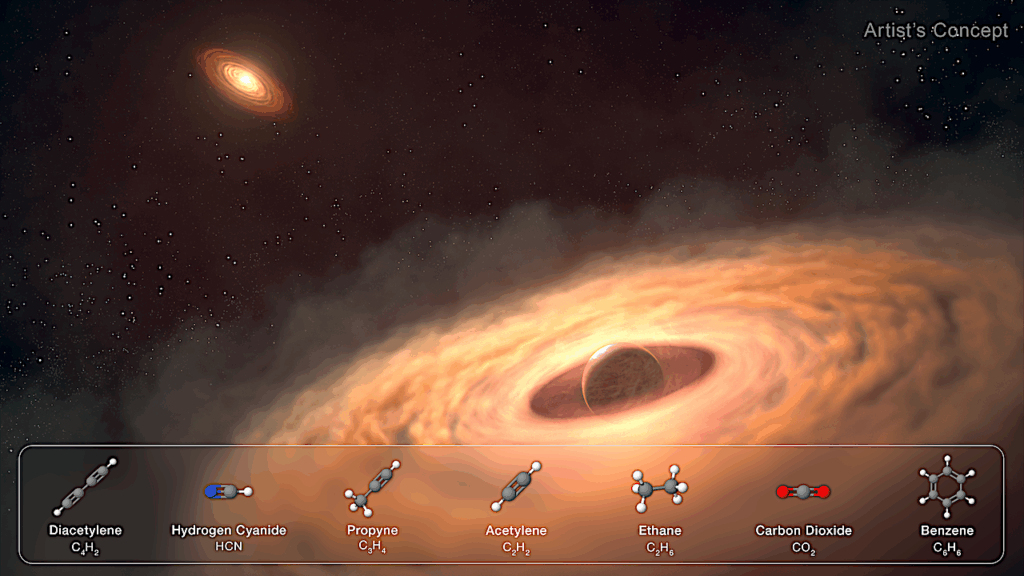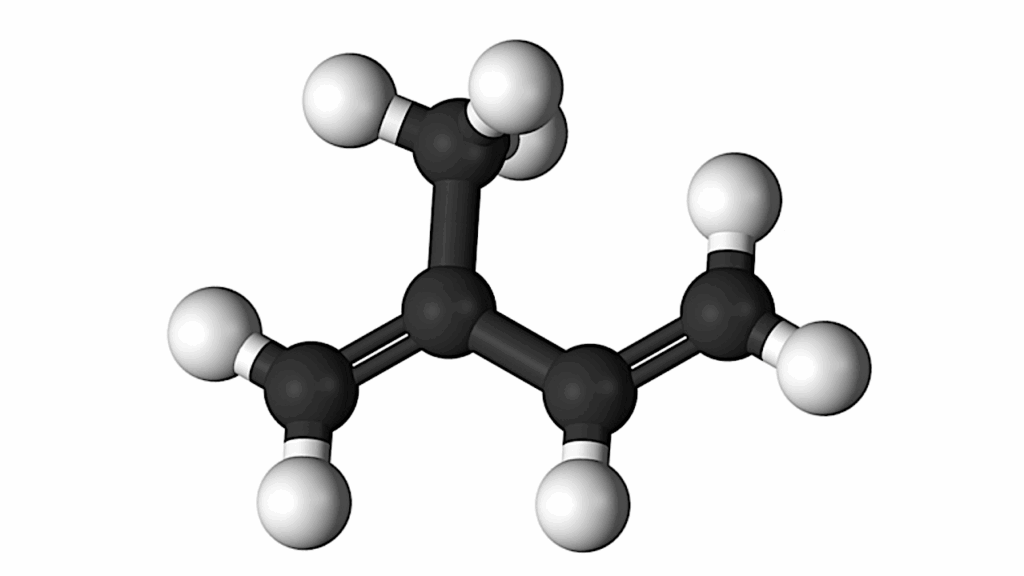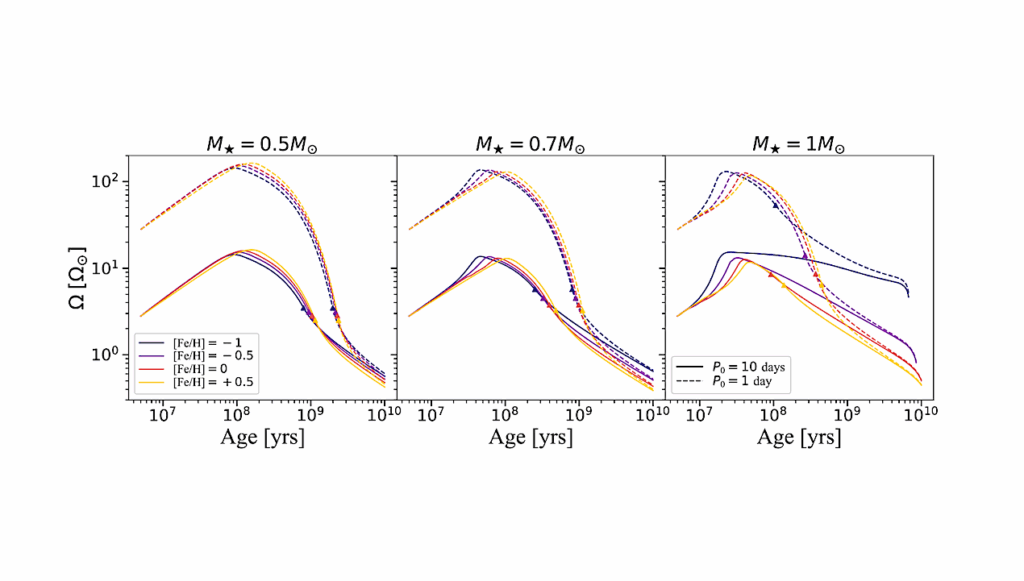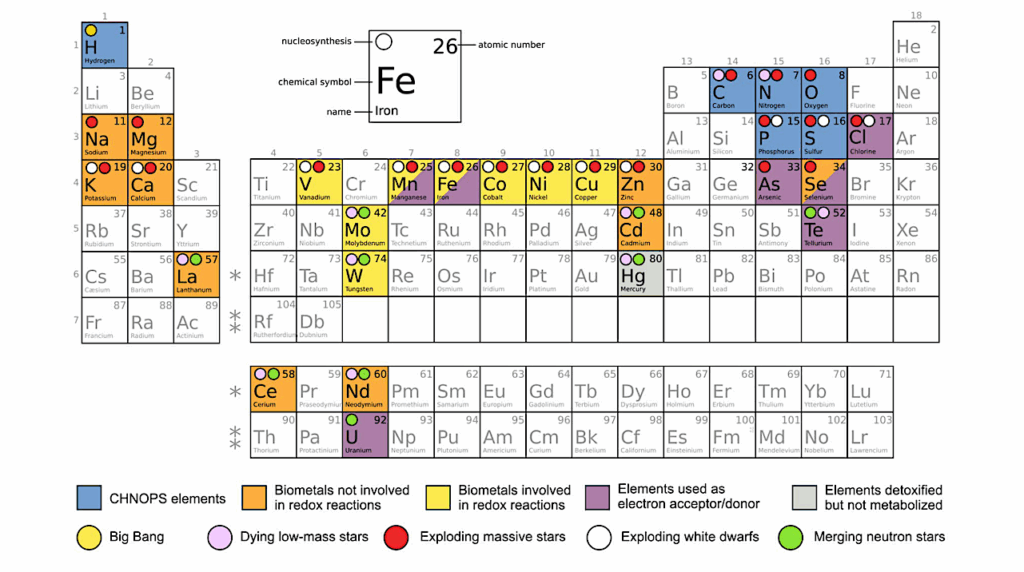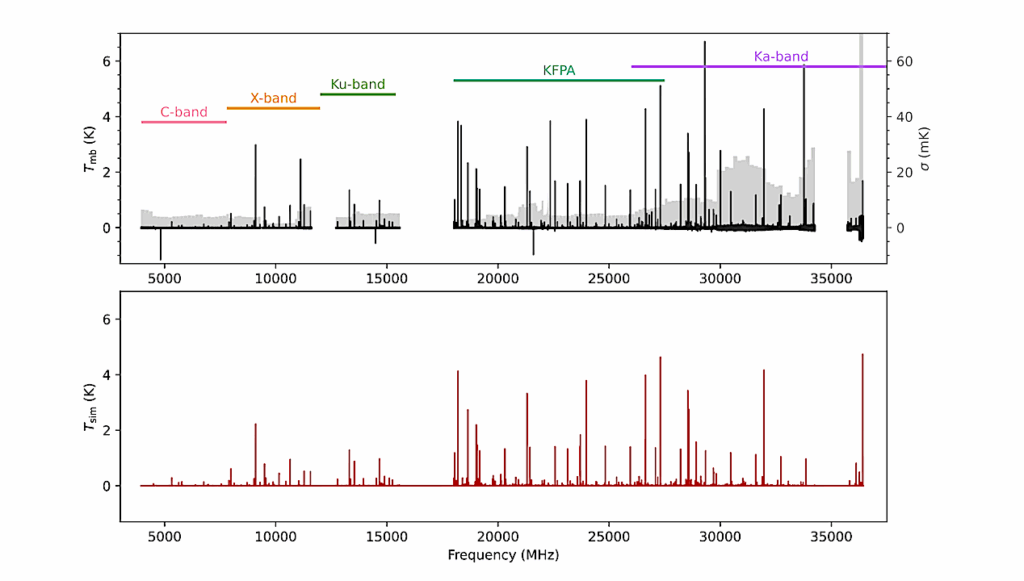Investigation of the Rotational Spectrum of CH317OH and its Tentative Detection Toward Sagittarius B2(N)

Methanol is an abundant molecule in space. The column density of CH138OH is in some star-forming regions so high that the search for CH317OH is promising. But only very few transition frequencies of CH317OH with a microwave accuracy have been published thus far. We recorded the rotational spectrum of CH317OH between 38 and 1095 GHz employing a methanol sample enriched in 17O to 20%.
A torsion-rotation Hamiltonian model based on the rho-axis method was employed to fit the data, as in our previous studies. We searched for rotational transitions of CH317OH in the imaging spectral line survey ReMoCA obtained with the Atacama Large Millimeter/submillimeter Array (ALMA) toward the high-mass star-forming region Sgr B2(N). The observed spectra were modeled under the assumption of local thermodynamic equilibrium (LTE).
The assignments cover 0≤J≤45, Ka≤16, and mainly the vt=0 and 1 torsional states. The Hamiltonian model describes our data well. The model was applied to derive a line list for radio-astronomical observations. We report a tentative detection of CH317OH along with secure detections of the more abundant isotopologs of methanol toward Sgr B2(N2b). The derived column densities yield isotopic ratios 12C/13C = 25, 16O/18O = 240, and 18O/17O = 3.3, which are consistent with values found earlier for other molecules in Sgr B2.
The agreement between the 18O/17O isotopic ratio that we obtained for methanol and the 18O/17O ratios reported in the past for other molecules in Sgr B2(N) strongly supports our tentative interstellar identification of CH317OH. The accuracy of the derived line list is sufficient for further radio astronomical searches for this methanol isotopolog toward other star-forming regions.
Holger S. P. Müller, Vadim V. Ilyushin, Arnaud Belloche, Frank Lewen, Stephan Schlemmer
Comments: 16 pages, including tables, figures, references and appendices. Abstract slightly shortened. Astronomy and Astrophysics, accepted for publication
Subjects: Astrophysics of Galaxies (astro-ph.GA); Solar and Stellar Astrophysics (astro-ph.SR); Chemical Physics (physics.chem-ph)
Cite as: arXiv:2407.01139 [astro-ph.GA] (or arXiv:2407.01139v1 [astro-ph.GA] for this version)
https://doi.org/10.48550/arXiv.2407.01139
Focus to learn more
Submission history
From: Holger Müller
[v1] Mon, 1 Jul 2024 10:06:39 UTC (875 KB)
https://arxiv.org/abs/2407.01139
Astrobiology, Astrochemistry


